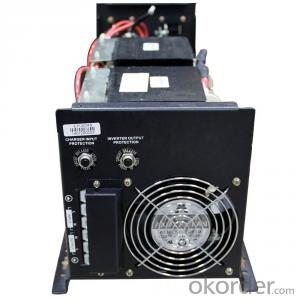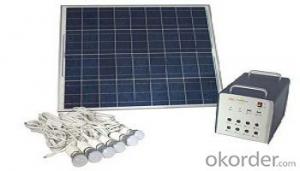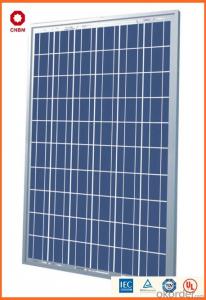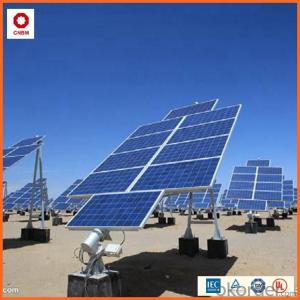Smac Solar Energy Systems - !!! Hot on Sale!!! Stock 310W Poly Solar Panel USD0.46/W A Grade Good Solar Panel on Sale
- Loading Port:
- China main port
- Payment Terms:
- TT OR LC
- Min Order Qty:
- 1 watt
- Supply Capability:
- 10000000 watt/month
OKorder Service Pledge
OKorder Financial Service
You Might Also Like
Product Description:
Hot Sale !!! Quality and Safety of 245w-320w Poly Solar Panel
1. Rigorous quality control meets the highest international standards.
2. High-transmissivity low-iron tempered glass, strong aluminium frame.
3. Using UV-resistant silicon.
4. IS09001/14001/CE/TUV/UL
Warranties of 245w-320w Poly Solar Panel
1. 10 years limited product warranty
2. 15 years at 90% of the minimal rated power output
3. 25 years at 80% of the minimal rated power output
Technical date of 245w-320w Poly Solar Panel
ITEM NO.: | Mono 125*125 cell ,36pcs . Power range from 80Wp-100Wp | ||||||||
Maximum Power(W) | 80 | 85 | 90 | 95 | 100 | ||||
Optimum Power Voltage(Vmp) | 17.81 | 17.89 | 17.94 | 17.99 | 18.06 | ||||
Optimum Operatige Current(Imp) | 4.78 | 4.91 | 5.12 | 5.35 | 5.59 | ||||
Open Circuit Voltage(Voc) | 21.98 | 22.05 | 22.14 | 22.28 | 22.45 | ||||
Short Circuit Current(Isc) | 4.95 | 5.15 | 5.36 | 5.65 | 5.84 | ||||
Solar Cell: | 125*125 Mono | ||||||||
Number of Cell(pcs) | 4*9 | ||||||||
Brand Name of Solar Cells | JA Cell, Bluesun Cell | ||||||||
Size of Module(mm) | 1580*808*35 | ||||||||
Caple & Connector Type | Pass the TUV Certificate | ||||||||
Frame(Material Corners,etc.) | Aluminium-alloy | ||||||||
Backing (Brand Type) | TPT | ||||||||
Cell Efficiency for 100W(%) | 15.8% | ||||||||
Weight Per Piece(KG) | 12.0KG | ||||||||
FF (%) | 70-76% | ||||||||
Junction Box Type | Pass the TUV Certificate | ||||||||
Tolerance Wattage(e.g.+/-5%) | ±3%, or 0-3% | ||||||||
Front Glass Thikness(mm) | 3.2 | ||||||||
Temperature Coefficients of Isc(%) | +0.04 | ||||||||
Temperature Coefficients of Voc(%) | -0.38 | ||||||||
Temperature Coefficients of Pm(%) | -0.47 | ||||||||
Temperature Coefficients of Im(%) | +0.04 | ||||||||
Temperature Coefficients of Vm(%) | -0.38 | ||||||||
Temperature Range | -40°C to +85°C | ||||||||
Surface Maximum Load Capacity | 2400Pa | ||||||||
Allowable Hail Load | 23m/s ,7.53g | ||||||||
Bypass Diode Rating(A) | 12 | ||||||||
Warranty | 90% of 10 years,80% of 25 years. | ||||||||
Standard Test Conditions | AM1.5 1000W/ 25 +/-2°C | ||||||||
Packing | carton or pallet | ||||||||
1*20' | 25 Pallets / 450pcs | ||||||||
1*40'STD | 25 Pallets / 100pcs | ||||||||
Features of our products:
• High conversion efficiency mono/poly-crystalline amorphous silicon solar cells
• Modules incorporate high performance bypass diodes to minimize the power drop caused by shading
• High transmittance, low-iron tempered glass
• High performance EVA encapsulant to prevent destroying and water.
• AI frame: without screw, corner connection. 8 holes on the frame can be installed easily
• Good performance of preventing from atrocious weather such as wind and hails
• Certifications: CE IEC TUV VDE UL, Class I
• 10 years 90% power output warranty

Shipping of 245w-320w Poly Solar Panel
By Sea | Delivery from Shanghai or Ningbo seaport |
By Air | Departure from Shanghai Pudong Airport |
By Express | Post by DHL, EMS, UPS, TNT. |
- Q: Are there any tax credits available for installing solar energy systems?
- Yes, there are tax credits available for installing solar energy systems. These credits, known as solar investment tax credits (ITCs), provide a financial incentive for homeowners and businesses to switch to solar power. The federal government offers a 26% tax credit for residential and commercial solar installations through 2022. However, it's important to note that state and local governments may also offer additional incentives and tax credits for solar energy systems.
- Q: Can solar energy systems be used to power large industrial facilities?
- Yes, solar energy systems can be used to power large industrial facilities. Advances in solar technology have made it possible to generate electricity on a large scale through solar panels or concentrated solar power systems. These systems can provide a significant amount of power required by industrial facilities, reducing their reliance on traditional energy sources and minimizing their carbon footprint.
- Q: How do solar energy systems impact social equity?
- Solar energy systems can have a positive impact on social equity by providing affordable and clean energy options to underserved communities. By reducing reliance on fossil fuels and the associated costs, solar energy can help alleviate energy poverty and promote equal access to electricity. Additionally, solar installations can create job opportunities, particularly in disadvantaged areas, contributing to economic empowerment and reducing inequality.
- Q: Can solar energy systems be installed on mobile homes?
- Yes, solar energy systems can be installed on mobile homes. In fact, they are a popular choice for mobile homeowners looking to reduce their reliance on traditional energy sources and lower their carbon footprint. Solar panels can be mounted on rooftops or on the ground near the mobile home, providing a sustainable and renewable source of electricity.
- Q: Can solar energy systems be used for powering amusement parks or entertainment venues?
- Amusement parks and entertainment venues have the potential to utilize solar energy systems for their power needs. Solar power has emerged as a viable and sustainable alternative to traditional energy sources, offering various advantages for large-scale operations like amusement parks. These venues consume a significant amount of energy, especially during peak operating hours. By installing solar panels, they can generate clean and renewable energy on-site, reducing their reliance on fossil fuels and minimizing their carbon footprint. This not only helps combat climate change but also promotes environmental stewardship and sustainability. Solar energy systems can be tailored to meet the specific energy requirements of amusement parks. The expansive roofs of buildings, parking lots, and other open spaces can be utilized to install solar panels, maximizing energy generation potential. Moreover, advancements in solar technology, such as thin-film solar panels and solar canopies, offer innovative solutions to seamlessly integrate solar power into the park's infrastructure. One of the key advantages of solar power is its ability to generate electricity during peak demand periods, which often align with the peak operating hours of amusement parks. This ensures a reliable and uninterrupted power supply, guaranteeing a smooth and enjoyable experience for visitors. Furthermore, solar energy systems can be combined with battery storage solutions. Surplus energy produced during the day can be stored in batteries and utilized during the evening or on cloudy days, ensuring uninterrupted power supply even when the sun is not shining. This enhances the reliability and resilience of the park's energy infrastructure. In addition to the environmental and operational benefits, solar energy systems can also result in long-term cost savings. Although the initial investment may be higher, the ongoing operational costs are significantly lower compared to traditional energy sources. The savings generated from reduced electricity bills can be reinvested into improving park infrastructure, enhancing visitor experiences, and expanding attractions. Amusement parks and entertainment venues have a unique opportunity to demonstrate their commitment to sustainability and renewable energy by adopting solar power systems. By harnessing the power of the sun, these venues can not only reduce their environmental impact but also inspire visitors to make more sustainable choices in their own lives. To summarize, solar energy systems can indeed be used to power amusement parks and entertainment venues. The multitude of benefits, including environmental sustainability, reliable power supply, cost savings, and the opportunity to promote renewable energy, make solar power an excellent choice for powering these large-scale operations.
- Q: Can solar energy systems be used in cloudy or rainy climates?
- Yes, solar energy systems can still be used in cloudy or rainy climates. While the efficiency of solar panels may be slightly reduced, they can still generate electricity even under overcast skies. Additionally, advancements in solar technology and the use of energy storage solutions can help overcome the intermittent nature of sunlight in such climates, making solar energy a viable option for generating power regardless of the weather conditions.
- Q: Can solar energy systems be used for space heating?
- Yes, solar energy systems can be used for space heating. Solar thermal systems can capture the sun's energy and convert it into heat, which can then be used to warm indoor spaces. This can be achieved through radiant heating systems, solar air heating systems, or solar water heating systems.
- Q: How does the efficiency of solar panels vary across different angles of sunlight?
- Solar panels' efficiency is subject to variation across different angles of sunlight due to various factors. One crucial factor is the incident angle of sunlight. When sunlight strikes solar panels perpendicularly, they operate at their highest efficiency. Conversely, as the angle of sunlight becomes more oblique, the panels' energy output decreases. This decrease occurs because when sunlight hits the panel at an angle, it must travel a longer distance through the material, resulting in increased absorption and reflection, and reduced energy conversion. Another factor affecting solar panel efficiency is the implementation of tracking systems. Some solar panels feature tracking systems that allow them to accurately follow the sun's movement throughout the day, thereby optimizing the angle of incidence. By ensuring that the panels are consistently aligned with the sunlight, these tracking systems significantly enhance the efficiency of solar panels and maximize their energy output. Moreover, the type of solar cell technology used can also impact the efficiency of solar panels. Different types of solar cells display varying sensitivities to the incident angle of sunlight. For instance, monocrystalline silicon solar cells tend to exhibit higher efficiencies at steeper angles of sunlight compared to polycrystalline or thin-film solar cells. To summarize, the efficiency of solar panels can differ across various angles of sunlight due to factors such as incident angle, the presence of tracking systems, and the type of solar cell technology employed. Optimizing the angle of incidence and implementing tracking systems can effectively optimize the efficiency of solar panels and increase their energy output.
- Q: Can solar energy systems be used in powering research farms or agricultural laboratories?
- Yes, solar energy systems can certainly be used to power research farms or agricultural laboratories. Solar panels can generate electricity which can be used to power various equipment and machinery used in these facilities, such as irrigation systems, lighting, climate control systems, and other electrical devices. By utilizing solar energy, these agricultural facilities can reduce their reliance on fossil fuels and significantly lower their operational costs while also contributing to a more sustainable and environmentally friendly approach to farming and research.
- Q: Can a solar energy system be used off-grid?
- Certainly! A solar energy system has the capability to function without being connected to the main power grid. Stand-alone systems, also referred to as off-grid systems, are specifically designed to generate and store electricity in regions that do not have access to the conventional power grid. These systems typically comprise of solar panels, a battery bank, and an inverter. Throughout the day, the solar panels convert sunlight into electricity, which can then be utilized to power various appliances, lights, and other electrical devices. Any surplus energy is stored in the battery bank for usage during periods without sunlight or during the night. Off-grid solar energy systems are extremely beneficial in remote areas or places where access to the power grid is unreliable or non-existent, as they provide a sustainable and self-sufficient source of electricity.
Send your message to us
Smac Solar Energy Systems - !!! Hot on Sale!!! Stock 310W Poly Solar Panel USD0.46/W A Grade Good Solar Panel on Sale
- Loading Port:
- China main port
- Payment Terms:
- TT OR LC
- Min Order Qty:
- 1 watt
- Supply Capability:
- 10000000 watt/month
OKorder Service Pledge
OKorder Financial Service
Similar products
Hot products
Hot Searches
Related keywords































